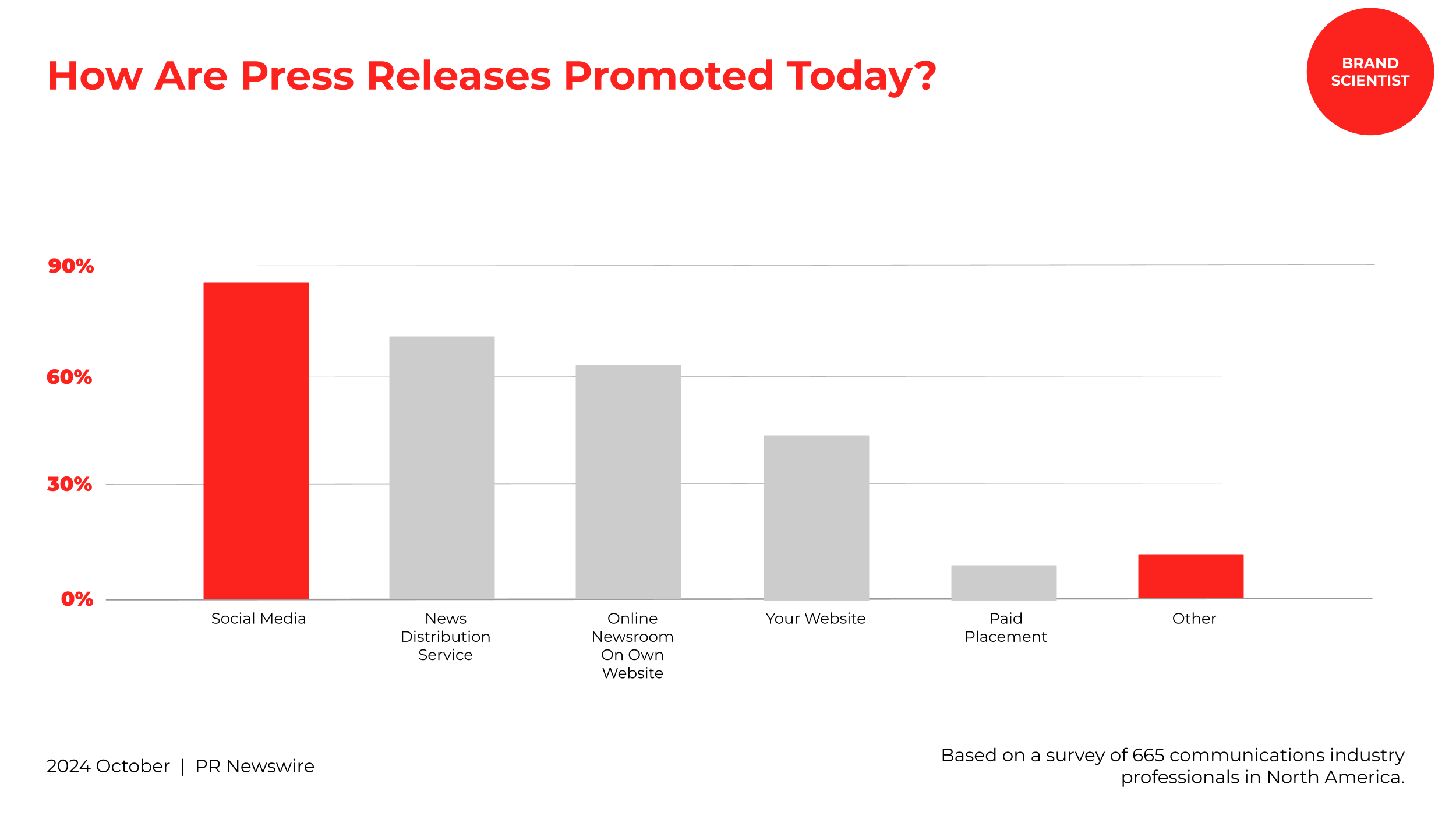Social Media, Blog Posts Top Methods For Sharing PR
Press releases remain a vital tool for communications professionals, with 72% reporting through a PR NewsWire survey that using a wire service increases brand and product visibility, while 52% say it reinforces industry leadership. However, one of the biggest challenges is generating media pickup, prompting professionals to distribute press release content through multiple channels. A significant 92% repurpose press releases, primarily through social media (48%) and blog posts/articles (37%).
Communications teams employ a mix of paid, owned, and earned media for press release promotion. Social media (83%) is the most commonly used channel, followed by news distribution services (69%) and company websites (61%). Only 9% of respondents use paid placements, such as native advertising or sponsored content, to amplify their releases. The primary topics for press releases over the next year will be product or service news (60%), events (47%), company growth (44%), and original content (42%).
Despite changes in distribution methods, press releases continue to be widely used, with 69% of professionals expecting to maintain the same volume over the next year. AI is playing an increasing role in press release creation—26% of respondents already use generative AI, while 42% are open to doing so in the future. AI is particularly used for crafting headlines, body copy, and proofreading. Additionally, multimedia elements are frequently included in press releases, with 88% of respondents incorporating visuals either always (37%) or sometimes (51%). The most commonly used action verb in press releases is “Announce,” which also receives the most page views.
Given these trends, marketers and PR professionals should focus on optimizing press releases by leveraging AI, integrating multimedia, repurposing content effectively, and exploring multi-channel distribution strategies. With media pickup being a challenge, a stronger emphasis on compelling storytelling and audience engagement will be crucial.
Key Actionable Takeaways:
Repurpose Press Release Content – Extend reach by sharing snippets on social media, writing blog posts, or incorporating key points into email marketing.
Leverage AI for Press Release Creation – Use generative AI for writing headlines, proofreading, and crafting body content efficiently.
Incorporate Multimedia for Engagement – Enhance press releases with images, videos, and infographics to boost visibility and reader engagement.
Diversify Distribution Strategies – Combine wire services, social media, website newsrooms, and blog content to maximize reach.
Optimize Press Release Headlines – Since “Announce” generates the most page views, experiment with strong action verbs to capture attention.
Enhance Social Media Promotion – With 83% using social platforms for distribution, tailor press release content for each platform to drive engagement.
Experiment with Paid Media – Consider native advertising or sponsored content to increase visibility, especially when targeting key audiences.
Focus on Storytelling Over Just Announcements – Make press releases more compelling by weaving narratives that engage journalists and readers.
Measure Performance & Adjust Strategy – Track metrics such as page views, social shares, and engagement to refine press release effectiveness.
Maintain Consistency in Press Release Output – With most professionals planning to continue regular distribution, keep a steady cadence to reinforce brand presence.
